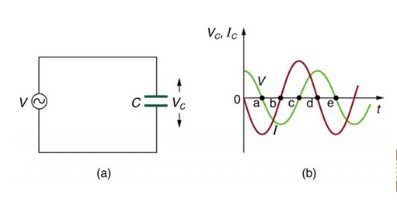What is Reactance?
Reactance (also known as electrical reactance) is defined as the opposition to the flow of current from a circuit element due to its inductance and capacitance. Greater reactance leads to smaller currents for the same applied voltage. Reactance is similar to electric resistance, although it differs in several respects.
When an alternating current passes through the electric circuit or element, the phase, and amplitude of current will change. The reactance is used to compute this change in phase and magnitude of the current and voltage waveforms.
When an alternating current passes through the element, the energy is stored in the element that contains reactance. The energy is released in the form of an electric field or magnetic field. In the magnetic field, the reactance resists change in current, and in the electric field, it resists the change in voltage.
The reactance is inductive if it releases energy in the form of a magnetic field. And the reactance is capacitive if it releases energy in the form of an electric field. As frequency increases, capacitive reactance decreases, and inductive reactance increases.
An ideal resistor has zero reactance, whereas ideal inductors and capacitors have zero resistance.
Reactance Formula
The reactance is denoted as ‘X’. Total reactance is a summation of inductive reactance (XL) and capacitive reactance (XC).
![]()
When a circuit element contains only inductive reactance, the capacitive reactance is zero and total reactance;
![]()
When the circuit element contains only capacitive reactance, the inductive reactance is zero and total reactance;
![]()
The unit of reactance is similar to the unit of resistance and impedance. The reactance is measured in Ohm (Ω).
What is Inductive Reactance?
The inductive reactance is defined as the reactance produces due to the inductive element (inductor). It is denoted as XL. The inductive elements are used to temporarily store electrical energy in the form of a magnetic field.
When an alternating current passes through the circuit, the magnetic field creates around it. The magnetic field is changing as a result of the current.
Change in the magnetic field induces another electric current in the same circuit. According to the Lenz law, the direction of this current is opposite to the main current.
Hence, the inductive reactance opposes the change of current through the element.
Due to the inductive reactance, the current flow results in the delay and it will create the phase difference between current and voltage waveforms. For the inductive circuit, the current lags the voltage.










